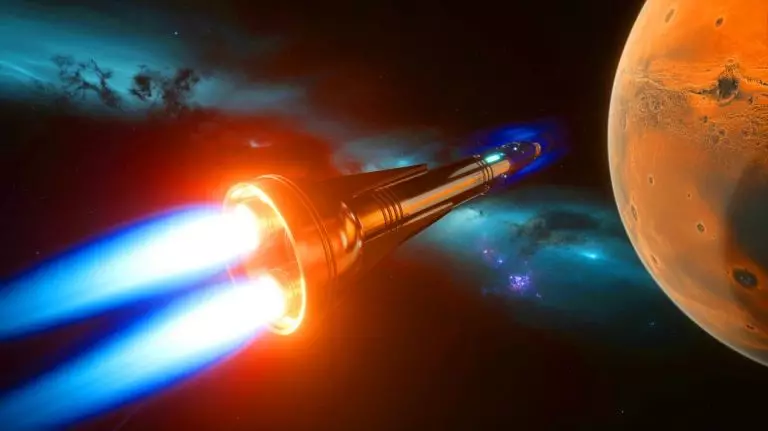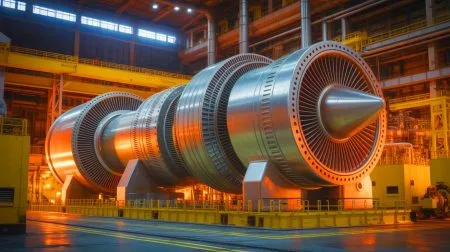| IN A NUTSHELL |
|
The pursuit of advanced space propulsion technologies is reaching new heights with the development of the Centrifugal Nuclear Thermal Rocket (CNTR). This cutting-edge engine uses liquid uranium fuel and promises to double the efficiency of current space travel methods. As teams from the University of Alabama in Huntsville and The Ohio State University lead the charge, the potential for more efficient interplanetary travel becomes increasingly tangible. With a focus on revolutionizing how spacecraft reach their destinations, the CNTR could be a game-changer in the field of space exploration, paving the way for missions to Mars and beyond.
Doubling Efficiency of Spacecraft with Uranium
The CNTR represents a significant leap forward in space propulsion technology, potentially doubling the efficiency of spacecraft compared to traditional methods. Nuclear thermal propulsion (NTP) has long been seen as a promising alternative to chemical rockets, largely due to its higher specific impulse. For context, NASA’s DRACO Program aims for a specific impulse of about 900 seconds using solid-core NTP systems, which is already impressive compared to chemical rockets.
However, the CNTR takes this even further by utilizing liquid uranium fuel. This innovative approach increases the specific impulse to approximately 1,500 seconds. The key lies in the use of a centrifuge to spin the molten uranium, through which hydrogen gas is bubbled and expelled to generate thrust. The transition from solid to liquid fuel not only enhances efficiency but also increases the spacecraft’s “delta-v” capabilities, which is crucial for deep space missions.
Addressing Challenges
Despite its promise, the CNTR faces significant engineering challenges that must be overcome for successful implementation. A recent paper in Acta Astronautica discusses ten critical issues, with a focus on four primary challenges. One major concern is managing the engine’s nuclear reactions, or “neutronics.” To stabilize internal temperatures, researchers are incorporating Erbium-167 into their models.
Another challenge involves understanding the movement of hydrogen bubbles through the liquid uranium. Experiments using “Ant Farm” and “BLENDER II” setups provide valuable data, although modeling these dynamics remains a complex task. Furthermore, preventing uranium from escaping through the nozzle with the hydrogen propellant is crucial, as significant uranium loss could drastically reduce specific impulse. The proposed use of dielectrophoresis (DEP) aims to capture vaporized uranium effectively.
Future Developments and Potential
While the CNTR is not yet ready for a full prototype, ongoing research seeks to refine this promising technology. Future efforts will center on minimizing uranium loss and testing the DEP solution in bench-top experiments. The CNTR concept offers the potential for a twofold performance increase over NASA’s current solid fuel NTP efforts, marking a significant advancement in in-space propulsion.
The continuing development of the CNTR highlights the potential for transformative changes in space travel. With further modeling and optimization, this technology could enable more efficient and cost-effective missions to distant planets, bringing us closer to a future where interplanetary travel is a reality.
As we stand on the brink of a new era in space exploration, the CNTR exemplifies the innovative spirit driving humanity’s quest for the stars. The challenges are significant, but so are the potential rewards. How will these advancements shape the future of space travel, and what new frontiers will we explore with this groundbreaking technology?
Did you like it? 4.5/5 (26)








Wow, this sounds like something out of a sci-fi movie! 🚀
Uranium in a rocket? What could possibly go wrong… 🙄
How long until we can expect to see this technology in action?
Great! But how fast would this travel? How long to Mars?
Did the article mention anything about the cost of such a mission?
Is it just me, or does this sound like something from a James Bond villain’s plan?
Thanks for keeping us updated on advancements in space tech! 🚀
How does the use of liquid uranium compare to more traditional fuels in terms of efficiency?
Great article, but more details on the safety protocols would be appreciated.
When are the researchers planning to start testing these rockets?
Is this technology solely for Mars missions, or could it be used for other planets too?
Uranium-powered rockets… The future is now! 🤖
How does the CNTR handle extreme temperatures in space?
Can’t help but feel a bit skeptical about the practicality of this…
Would love to see a simulation of this technology in action.
Is China really caught off guard, or is this just sensationalism?
Why isn’t NASA leading this initiative?
Isn’t using uranium for propulsion a bit dangerous? What if there’s a leak? 😅
Is there a timeline for when this could be operational? Any estimates?
Liquid uranium? Sounds like something out of Star Trek! 🖖
I’m curious about the potential commercial applications of this tech.
How does this new propulsion system affect the payload capacity of a spacecraft?
What are the implications for international space treaties with this tech?
So, when are tickets to Mars going on sale? 😄
More info on the dielectrophoresis process, please!
Is this the first time liquid uranium is being used in such a way?
Hope they have contingencies for uranium containment! 🤞
Interesting article, but would love to see more expert opinions included.
How does this compare to Elon Musk’s plans for space travel?
Thank you for breaking down the science behind this technology! Very informative.
Can this technology be adapted for use in Earth’s atmosphere or just space?
Are there any environmental concerns with this kind of propulsion?
This is amazing news for the space industry! Can’t wait to see how this develops. 🌌
Uh no cause it never will happen! SMDH!